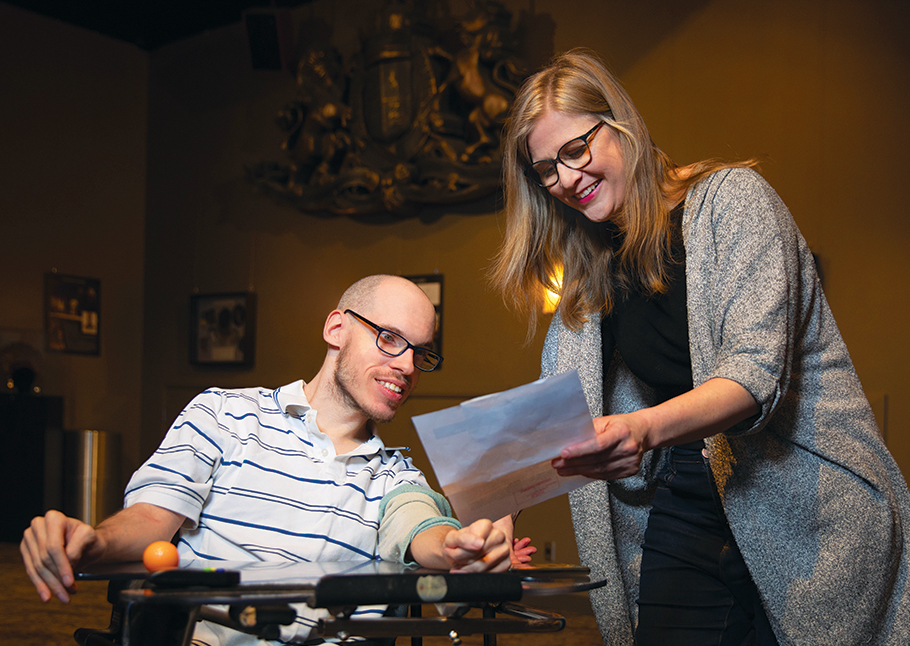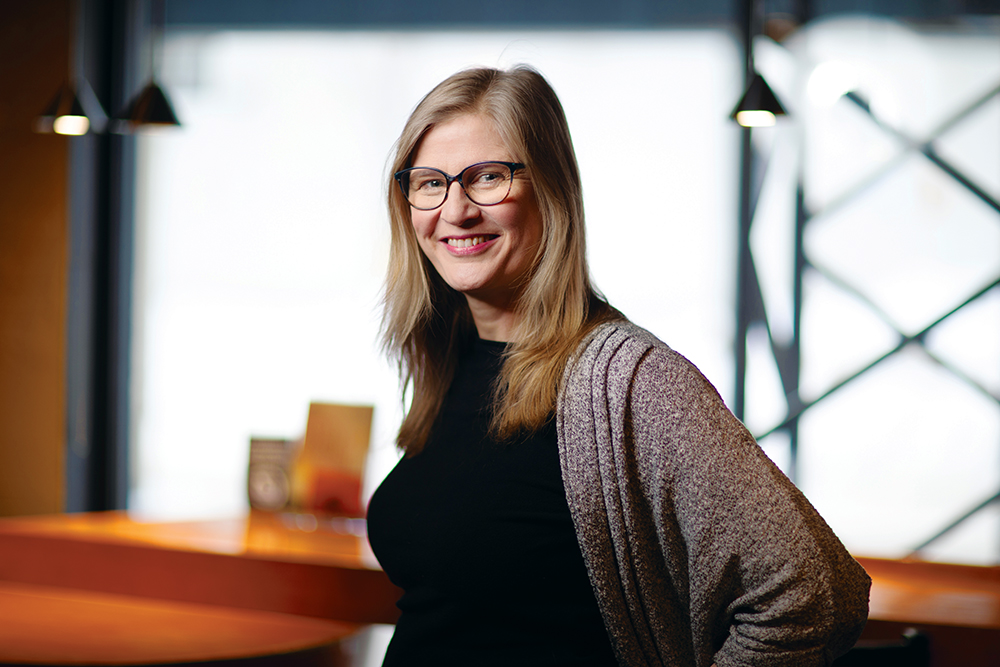
Stefanie Wiens [BMROT/96] knew at the age of seven that she wanted to be an actor.
By the time she was 13, she had also started to think about occupational therapy, after the “obscure” career was suggested in an aptitude test at school.
What she never expected was that pursuing both interests would eventually come together in a meaningful way.
“I initially kept my occupational therapy work and my acting and theatre work separate, but things would come up to change that,” she says.
Wiens was born in Toronto to academic parents and has lived most of her life in Winnipeg. She started the occupational therapy (OT) program at UM when she was 18 and took theatre electives at the same time.
After graduating in 1996, she worked for a few years in OT at the Children’s Hospital at Health Sciences Centre. She spent the summers touring the Canadian fringe theatre circuit with her partner, Angus Kohm [BA/93], whom she had met at UM’s Black Hole Theatre.
“I continued to work at Children’s until about 2007, but I got one too many acting jobs that I needed to take time off for,” she recalls.
Wiens then found herself returning to the hospital in another capacity: creating instructional videos. It was one of the first times her professional worlds came together, as she was becoming interested in the production side of film and theatre. She and Kohm would soon start a video production company.

In 2017, while acting in a small role on the Royal Manitoba Theatre Centre (RMTC) mainstage, Wiens was approached about a unique opportunity. The company was planning a production of Edmonton playwright Brad Fraser’s Kill Me Now, a dark coming-of-age story about a disabled teen.
Unlike in previous productions of the play, director Sarah Garton Stanley insisted that the teen be played by a disabled actor for the runs in Winnipeg and Ottawa.
Myles Taylor, a Winnipeg actor who has cerebral palsy and uses a power wheelchair, was cast in the role. Wiens was hired to work as his backstage aide. She used her OT expertise to figure out how certain aspects of the production would work, such as actors convincingly and safely performing caregiving duties.
In the opening scene, the young man is being bathed by his dad, who then gets him out of the bath and dresses him. The director and the actor playing the father both thought Taylor could simply be lifted out of the tub on stage. Taylor and Wiens knew this would be unsafe.
“A character like this might actually use a Hoyer lift, but that would make the scene too long. But if we used a hydraulic bath chair, we could get him up to the top of the tub, which would be better for moving him, and tell the story effectively.”
The job was Wiens’ first in a role she now calls “accessibility choreographer.”
“In theatre, we bring in fight choreographers to deal with movements that have some risk to them, and actors who need to be taught specific skills. This is a lot like that.”
Wiens worked with RMTC again on a production of A Christmas Carol, which had a child who uses a wheelchair playing Tiny Tim and other characters. She also worked on the Hulu feature film Run, starring Sarah Paulson as the mother of a teenage girl with a disability.
“Suddenly, I felt like I had landed in a role where I could be really useful, and that was also very interesting for me,” Wiens says.
“I really enjoy being able to help directors tell the story they want to tell and address things that might get in the way of that, but also addressing disability. There’s a stigma about disability in society and a discomfort in talking about it.”
In 2020, theatre work stopped because of the COVID-19 pandemic. But with funding from the Canada Council for the Arts, Wiens created a podcast, co-hosted with Taylor, called Disability Stage Right. Over 10 episodes they interviewed theatre artists with disabilities about the barriers they face in professional and training spaces.
A common theme Wiens heard on the podcast was the need for theatre schools to become more accessible for potential students with disabilities. As a result, she now does contract work with the University of Winnipeg to address this.
Wiens still does other OT work. Around the same time that she started her accessibility work with theatres, she also started a position with Rehabilitation Centre for Children. There, she provides outreach OT services to preschool-aged children in First Nations communities.
She is also working toward a master’s degree in rehabilitation science at UM. Her thesis will explore a specific First Nation community’s current experience of OT services, what they would like from occupational therapists, and how a collaborative, relationship-focused approach could facilitate greater local control over how the services are delivered.
“What interests me right now is how I, as an insider – whether that’s in theatre or occupational therapy – can use my position to contribute to the systemic and structural changes needed to create a more just and inclusive world,” she says.
“What could be more meaningful than that?”
BY ALAN MACKENZIE
